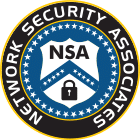Network Security and Identifying Potential Threats
Being able to identify potential cyber threats is essential if you want to keep your network and information secure.
When you are on the defense, there are two things to think about. First is identifying potential threats and determining where they are coming from. When you are dealing with security issues and the information your company stores in private clouds and on-site databases, threats can come from any direction and a variety of sources. You have to be able to have a 360-degree vision at all times.

Managing SDN Environments
Software-defined network environments don’t have conventional boundaries. You must have the tools you need to protect your data stored in private clouds and other networks like VMware NSX, even when the boundaries aren’t visible. You have to be able to defend your system like a ninja, identifying potential threats and neutralizing them before they gain access to your systems. To handle a proper defense, you need to know how the different networks function and how information flows between each location.
Vigilance and Flexibility Are a Must
A holistic approach will provide you with the flexibility and alertness you must have if you plan on keeping your networks secure. You can start to segregate specific information groups making it easier to protect them within an SDN platform. Tools like Nutanix Flow and VMware NSX-T make this type of isolation happen and effectively reduces the amount of surface area that is available for an attack. To prevent a false sense of security, however. Since many of the smaller segments must continue to work together, it can, in turn, create minor breaches within the multiple connections that make the system extremely vulnerable to different types of cyberattacks.
Taking Aim at Moving Targets
Even though intruders can still make their way into SDN environments, several security tools can be used to put up walls and identify various threats. By having these tools and resources in place, it gives IT professionals the time they need to prevent extensive loss throughout the system. The security tools must be able to offer protection far beyond the software-defined networks. Boundaries must be set throughout the network to catch moving targets before they hit the SDN environments.
Being able to incorporate these security protocols outside of the SDN environments protects the network. This allows for the transfer of information from place to place, both inside and outside of the network, while still having consistent and reliable protocols in place to detect threats and prevent them from becoming a significant problem. By identifying the risk in its earliest stages, IT departments can not only save vital information, and they can strengthen the boundaries that are already in place.
Identify, Inspect, and Prevent
Next-gen firewalls are the most effective way of keeping security protocols in place when you are working between your network and an unidentified or unsecured network. Both URL Filtering and DNS Security can protect you from unwanted intruders while you work. Virtual firewalls, like the VM-series, are extremely beneficial when it comes to providing threat protection.
Many firewalls are built with a “zero-tolerance, no trust” platform. This allows the firewall to not only identify potential threats but block them as well. These firewalls can locate even the smallest risks and inspect them thoroughly. Detected threats are then blocked and prevented from gaining access to your data systems.
In an SDN environment, information must travel continually in and out of zones that may or may not be secure. You must have a system in place that provides the level of protection you need that can not only identify potential threats but block them so they cannot gain access and affect or damage your confidential information.

